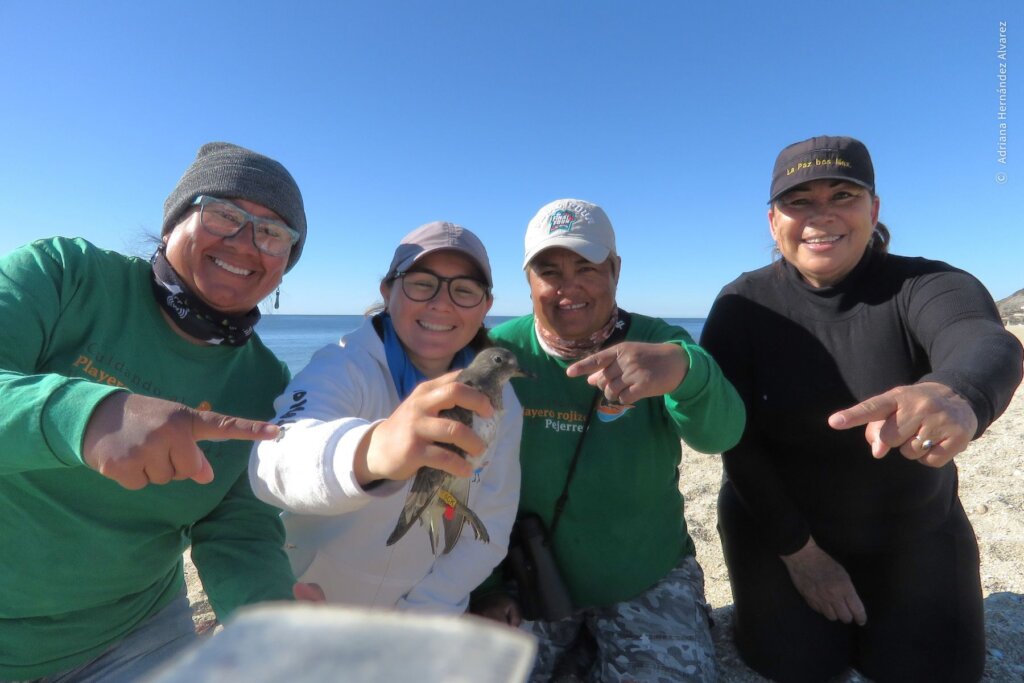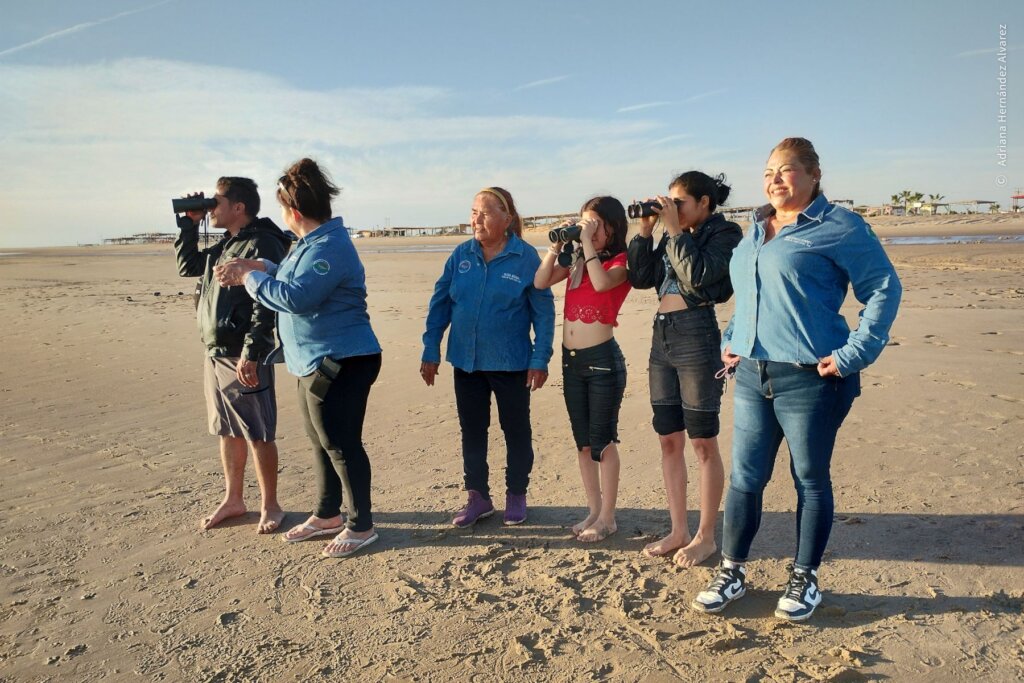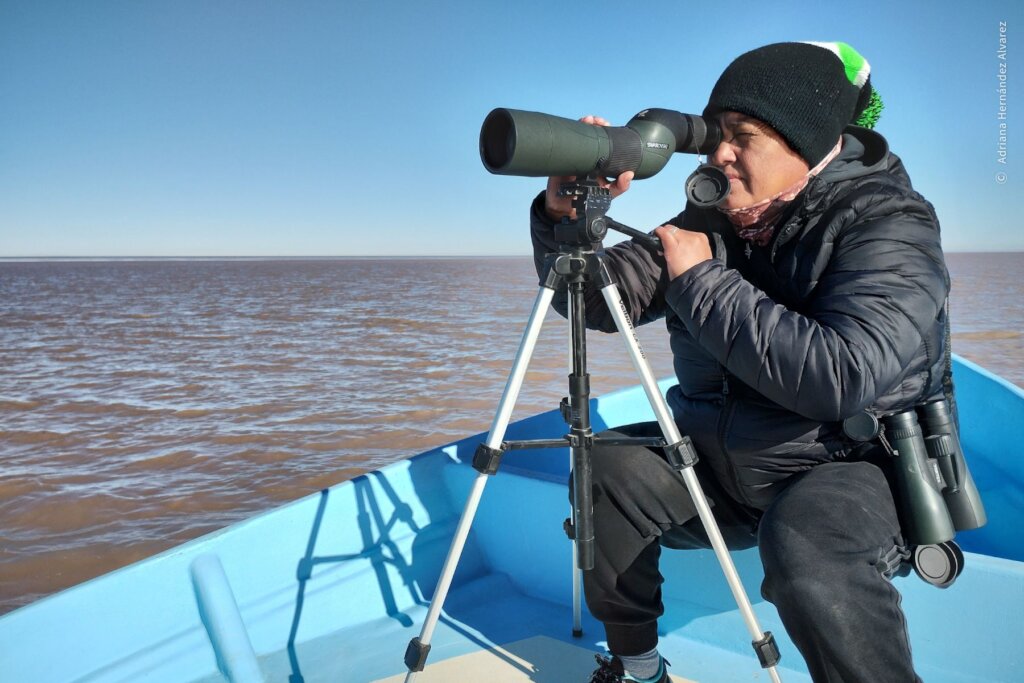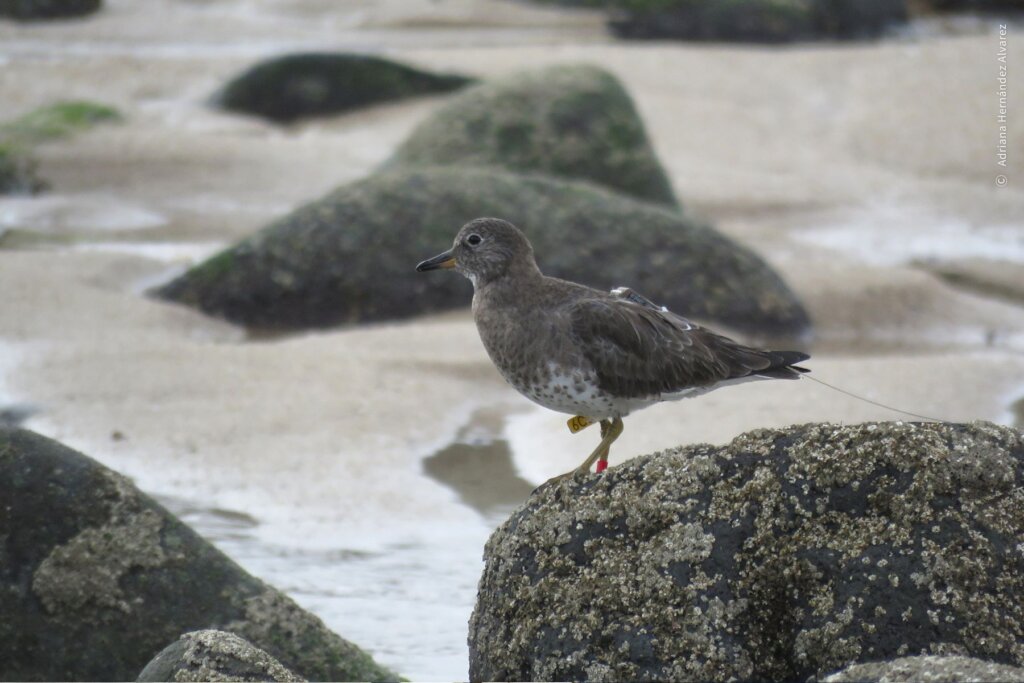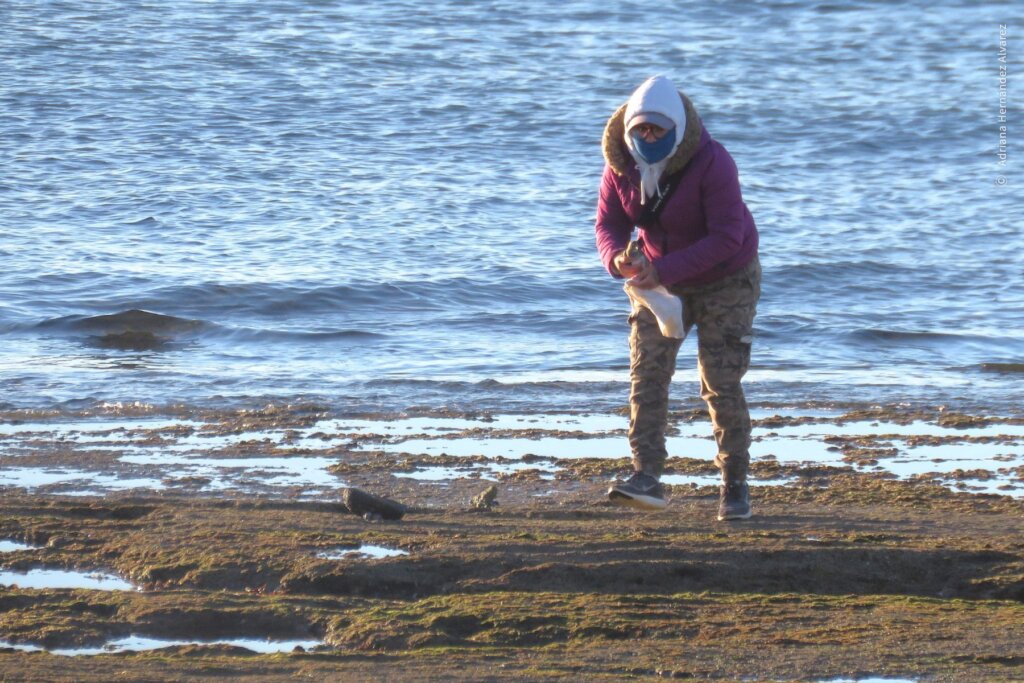By Adriana Hernandez Alvarez | Project Leader
To conclude the bird monitoring we carried out with the support of CONANP (National Commission of Natural Protected Areas), in December 2024, we conducted a survey using a small boat in the island zone of the Upper Gulf of California and Colorado River Delta Biosphere Reserve. These islands are massive sediment banks that settled as part of the flow once carried by the Colorado River. They have sparse but ecologically important vegetation, including the Delta saltgrass (Distichlys palmeri).
The coastline of these islands and their surroundings, where muddy beaches predominate, has been recognized as a habitat for more than 100 000 individuals of shorebird and seabird species. However, during our survey, we recorded only about 25 000, so we are unsure whether this was an anomalous figure or a real decline in bird populations. For this reason, it is important to continue monitoring programs.
On another note, we started 2025 collaborating for the second year with the Canadian Wildlife Service to capture and tag at least five Surfbirds (Calidris virgata) along the rocky coast of Puerto Peñasco, Sonora. Although it was much more challenging this time, we succeeded! These birds were fitted with a tag that transmits their geographic location, allowing us to understand the species' migratory connectivity. In 2024, when we conducted this activity for the first time, we captured and tagged three Surfbirds, two of which returned in the fall to the same tagging site to spend the winter there. Now, we eagerly await how these newly tagged individuals will behave. This effort is part of a larger project with tagging points along the Pacific coast of the Americas, and we hope to soon share an integrated map with all the results—it will surely be fascinating!
In February, we resumed activities in Golfo de Santa Clara to record the spawning days of the endemic fish Gulf Grunion (Leuresthes sardina). The first spawning events can occur as early as December, January, or February, but only during the high tide at dawn. The largest spawnings take place in March and April, also during the high tide in the afternoon. This March, we are working on habitat conservation and sharing information with visitors and residents about the importance of the Gulf Grunion and its ecological relationship with the Red Knot.
On March 16, we installed a temporary fence to mark some of the Gulf grunion's spawning areas, which are also feeding and resting sites for Red Knots and other migratory bird species such as Western Sandpiper, Sanderling, Willet, Marbled Godwit, Ring-billed Gull, among others.
Links:
Project reports on GlobalGiving are posted directly to globalgiving.org by Project Leaders as they are completed, generally every 3-4 months. To protect the integrity of these documents, GlobalGiving does not alter them; therefore you may find some language or formatting issues.
If you donate to this project or have donated to this project, you can receive an email when this project posts a report. You can also subscribe for reports without donating.
Support this important cause by creating a personalized fundraising page.
Start a Fundraiser